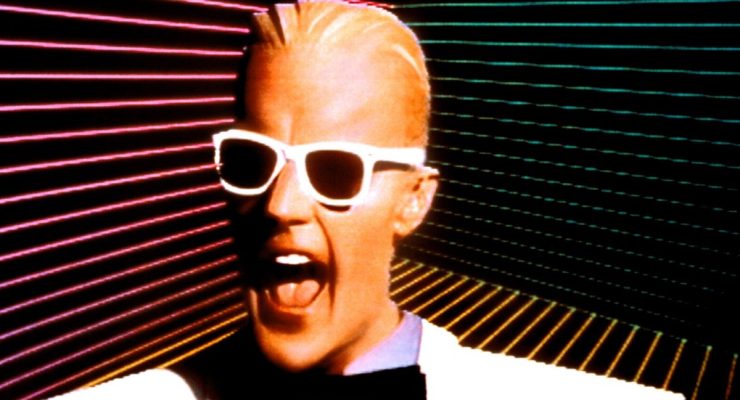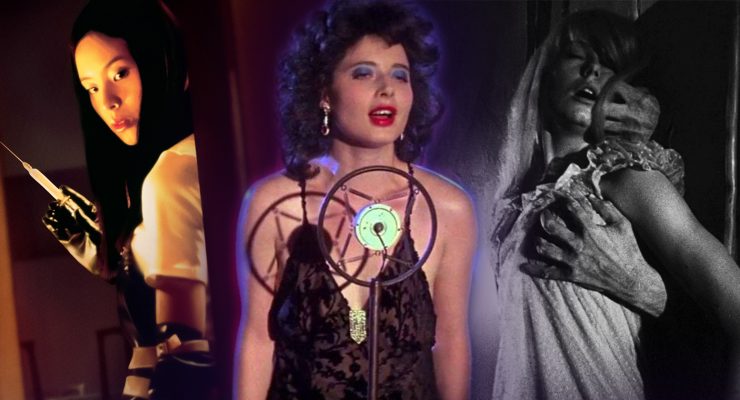Ricky Church marks the tenth anniversary of Drive…
While a certain franchise that is both fast and furious may have dominated the car heist genre in the past decade plus, every now and then there comes along a film that gives the genre a shot in the arm for how dramatic and captivating its story and characters can be. Today marks the 10th anniversary of one such film: Drive, starring Ryan Gosling from director Nicolas Winding Refn and screenwriter Hossein Amini which saw Gosling as an unnamed getaway driver for hire who gets caught up in more than he bargained for both professionally and personally. Drive remains an outstanding film for its, no pun intended, character-driven nature and use of visuals to tell the story much more than any dialogue can.
The film follows an unnamed criminal listed in the credits simply as Driver. His introduction in the opening minutes makes a great short film of its own as he talks to a client on the phone, promising “You give me a time and a place, I give you a five minute window. Anything happens in that five minutes and I’m yours. No matter what. Anything happens a minute either side of that and you’re on your own.” That and his ability to keep cool under pressure, as well as his knowledge of the routes in LA and his plan of escape, tells us everything we need to know about Driver. He’s intelligent, slick and keeps his word as the moment his five minutes are up and they’re clear of the cops he ditches the car and the criminals he helped, unconcerned with whatever fate has in store for them. Gosling’s performance in this intro makes it clear audiences are in for a role unlike any other in his career at that point and to this day.
By day, Driver worked as a mechanic and professional stunt driver for movies with his employer, played by Bryan Cranston, aiding him in his criminal activities with burner cars. It’s not until Driver begins getting to know his next-door neighbour Irene, played by Carey Mulligan, and her young son Benicio that he opens up slightly (only just slightly) more than before as an underlining romance grows between them. Gosling and Mulligan share quite an engaging chemistry for a romance that has little dialogue between them. Most of the relationship between Driver and Irene is explored with the way they look at each other, how their body language eases up when they’re together and other subtleties. This was an intentional decision made by Gosling and Mulligan who ignored much of their scripted lines so they could focus more on the mood of a scene and having the audience feel it rather than being told how to feel. Their lack of dialogue really does enhance the attraction between Driver and Irene and works with their characters, especially Driver’s quiet and seemingly subdued nature.
This is one reason why Drive can often be mislabeled as an action thriller when it instead is an arthouse neo-noir. Indeed, the trailer for the film sold it as a Fast & Furious clone to the point where a woman sued the studio because it was nothing like what was promoted. With its quiet introspection of its lead character and his budding romance, Drive is a character piece less about car chases and more about what drives the motivations, goals and choices of its characters. That doesn’t mean, however, there is no action as Drive not only delivers a couple tense and well shot car chases, but really graphic and bloody violence. While still retaining its arthouse look and feel, the second half of Drive features quite a few brutal moments as Driver becomes the target of a couple mob bosses covering their tracks in a botched robbery. It’s even more surprising that the brutality often doesn’t come from the villains, but from Driver himself as he improvises a curtain rod into a weapon or curb stomps a hitman’s face into a messy pulp. Even in moments like that, though, the film remains focused on the characters as the camera stayed locked on Driver rather than the bloody mess and Irene’s immediate shock at witnessing his unhesitating violence.
The supporting cast is also great with a group that includes Cranston, Oscar Isaac, Ron Perlman, Albert Brooks and Christina Hendricks. It is hilarious that Cranston, in order to make up for the lack of dialogue Gosling had, ad-libbed much of his lines throughout the film to very effective comedic moments. With a husband coming back from prison to interrupt a new romance, it would have been easy for Refn and Amini to follow the trope of a jealous and abusive spouse, but Isaac actually makes Standard a likeable character who legitimately wants to turn his life around and be there for his family. It is only the mob’s threats to his family and Driver’s offer to help him out of trouble for Irene’s sake that pushes him back into crime. Hendricks surprisingly doesn’t have much to do, but she makes an impression as Blanche in her short screentime while Perlman is an unlikeable and foolish, yet somewhat sympathetic, bad guy. Brooks is one of the film’s most defining characters as the mobster Bernie Rose, being funny and actually friendly with both Driver and Cranston’s Shannon, but also being quite a brutal and ruthless killer when he needs to be. He and Gosling are perfect mirrors of the other’s performance as Brooks’ Rose is more of a talker, but sees things in a rational way and wishes events could have been different even as he dispassionately goes into self-preservation mode. Together the whole ensemble turns in fantastic performances that subvert the typical roles their archetypes usually play.
Adding to Drive‘s uniqueness is the soundtrack and score. It serves as a throwback to films from the 70s and 80s with its synth score from Cliff Martinez and the headlining songs used at significant moments in the film: Kavinsky’s ‘Nightcall’, Jewel’s ‘Under Your Spell’ and College’s ‘A Real Hero’, all feeding into that feel of an 80s genre film. The music further conveyed the story alongside the visuals, coming in at emotional or dramatic moments and cutting out completely during any action scene. The cinematography itself tells the story better than the dialogue could as it focuses on the characters emotions, like the joy Driver, Irene and Benicio display as they drive through the LA River or the kiss Driver and Irene share before he shows her what he’s capable of as a final goodbye. Drive is a great example of what this visual medium can be and how its stories and emotions can be expressed through its imagery.
Drive may not be an action-packed, constant chase like Fast & Furious or Gone in 60 Seconds, but its character driven approach to its story and visuals make it an outstanding and memorable part of that particular heist genre. Gosling and Mulligan deliver fantastic performances that serve as the film’s backbone while the rest of the ensemble also give admirable jobs to their roles. 10 years later, Drive is still one of the best films of the decade and a standout of Gosling’s career for its story, themes, visuals and character performances. While a sequel of some form would be interesting, both Refn and Gosling have expressed their disinterest as Drive concluded definitively for its lead character. It is also perfectly apt as Driver himself said we have him for only the minutes he allows, not a single one before or after what he gives us.
Ricky Church – Follow me on Twitter for more movie news and nerd talk.
















